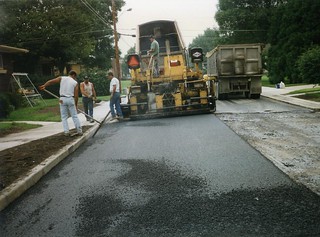 Over the last few days I’ve been exposed to two ideas that interest me in how each demonstrates the need to properly vet an idea. (As an aside for for all of you familiar with MMORPGs: I figure if life was a game, “Vetting an Idea” would be considered a passive ability for those in the engineering profession.) First on Friday, I came across a quick example from the business world. One of my favorite companies, Linden Lab, offered a package deal on Amazon for their product Second Life. The deal was that you could buy a “Starter Package” for $0 (marked down from $9.95) and get a free vehicle for use in Second Life along with $1,000L which has a value of roughly $4 USD. While there is the root of a good idea here, I am not sure its implementation was properly thought through. The problem is that it was supposed to be ONE PER CUSTOMER. Yet people quickly discovered, for those who have multiple characters/avatars in Second Life, it was possible to buy this for each one. By the end of the day on which it launched, the offer was discontinued.
Over the last few days I’ve been exposed to two ideas that interest me in how each demonstrates the need to properly vet an idea. (As an aside for for all of you familiar with MMORPGs: I figure if life was a game, “Vetting an Idea” would be considered a passive ability for those in the engineering profession.) First on Friday, I came across a quick example from the business world. One of my favorite companies, Linden Lab, offered a package deal on Amazon for their product Second Life. The deal was that you could buy a “Starter Package” for $0 (marked down from $9.95) and get a free vehicle for use in Second Life along with $1,000L which has a value of roughly $4 USD. While there is the root of a good idea here, I am not sure its implementation was properly thought through. The problem is that it was supposed to be ONE PER CUSTOMER. Yet people quickly discovered, for those who have multiple characters/avatars in Second Life, it was possible to buy this for each one. By the end of the day on which it launched, the offer was discontinued.
I won’t go into the whole analysis of it here because there have been many blog posts already written about what happened. But I offer it to show that vetting an idea is important for both business as well as government. And the failure to do so can result in unintended consequences along with a backlash of criticism from the community.
Should government give people free iPads?
The example I really wanted to delve into was an idea shared with me by another government professional who works for another community. He is kicking around the idea of giving a free iPad to one or two residents on each construction project to help improve communications during a construction project. Now at first, my engineer sense, which in many ways seems to work very much like Spiderman’s spidey sense, says this is a bad idea with terrifying results. And not for the reason you are probably thinking. But in an effort to not be the “Negative Nancy” that many accuse engineers of being, I thought I’d ignore my first reaction and try to see how to make this work. And by doing so, begin putting it through the vetting process.
Formulating the outcome
So the first step is to formulate the desired outcome or put down in writing why we are doing this. In this particular case, this person wants to increase communication during a construction project. He figures there are always one or two people on a project who always want to hang out and watch so why not give them the means to manage the communication for the project for their neighborhood. So he suggested giving them free iPads and asking them to use them to keep everyone up to date.
How did we do this before?
As some background, in the past and prior to social media project-related communication was normally done through several methods: sending out letters to the community and those most affected by the project and making personal contact throughout the project with those located within its limits or those affected by the project site. Now with the Internet, we can also add this information to websites and other social media sites. I experimented with using Twitter for this purpose back in 2008 and found it to be very successful. (See the Twitter stream from that project here: http://www.twitter.com/golfview2008).
Anticipating the unintended consequences
So let’s anticipate any problems or consequences that could be caused by introducing the iPad idea. One of the first that comes to mind for me is based on a common occurrence engineers experience on the jobsite. They are often faced and confronted by a high degree of concern for fairness between properties. If one person gets their driveway touched and others do not, people are wondering why. Some demand they get the same treatment. Usually after we explain that only driveways impacted by the design and construction of the project are touched, most people understand and drop their demand for a new driveway. After all, we are not building the project for the purpose of giving everyone a new drive, but only to fix the road. However I have worked places where people become raving mad about not getting a new driveway, even if it isn’t needed, just because their neighbor got one. So I would anticipate that giving a free iPad to one or two people on a project might bring out this sense of “my neighbor got something I did not.”
The other issues are more of legal questions. First what if the iPad is given with the understanding that it will be used to communicate to others and the person does not do this. How would the city enforce their expectation and can they and is doing so a good idea?
Another question is what if no one wants to do this? The residents who spent the most time on my projects did not seem like the type who would be interested in serving as the information people for the project so how do we find those who do? And what will be the process for making sure we have given everyone equal opportunity to volunteer?
The other legal question is that if the city gives someone a free iPad and tells them they expect it to be used to communicate information about the project and the person does this, but they also use it to display child pornography does the city have any liability in their actions? Perhaps there is no liability, but not being a lawyer, I am not sure.
Thinking outside the box
So how could these two problems be avoided? Perhaps there could be a lottery for the iPad so that the opportunity to use it is by chance. But that might increase the risk that it would not properly be used for its intended purpose. Could an information kiosk be set up on each job with restrictions on what could be added to it? Could we have the person receiving the iPad sign something to protect the city should it be used for illegal purposes?
I am not sure of the answers to much of this and am still considering all aspects and trying to find solutions. I am also sure the person suggesting this plans to run it through their own vetting process. But in the meantime, I thought it’d be a good topic to throw out to the community for feedback because I am sure at some point someone in your own community might suggest a similar idea. I’m also interested in hearing what citizens would think about their government trying out this idea.






Note from CES (consumer electronics show) – “Post smart phone era, Post PC era” Yes folks the future is hear already and it started today!
Last month iPad and Android Galaxy sales out stripped PC sales. Second – how often do you use your smart phone as a phone? Web surfing, mobile apps, texting. What about just calling? Smartphones are driving mobile apps. Apps – applications that do not talk. (yet – more on that later)
iPads? eh. Man does not live; buy Apple alone. Android and Ubuntu (google it) are here and coming.
Now here is a brain twister back to the future. Its 1950 with a few large mainframes holding all the electronic information driving local dumb terminals. Fast forward 60 years to 2013 – a few large cloud servers holding all the electronic information driving dumb terminals called web browsers. Yep folks its 1950 all over again.
Unforseen? Check out 1954 Asimov book “Caves of steel” where people talk to each other not on the phone but through these dumb terminals (web browsers) using electronic mail and messages.
As for iPads being waste of time, eh they give us free pads and pens. I can doodle, do games and wate time on them as well. Plus my paper pad was Y2K compliant and is Y9K (year 9999) ready.
iPads are here to be productive. Even “Star Trek – The Next Generation”‘s Capt. Picard used a smart tablet.
Kindly.
I’m not sure that lack of access to devices, or the web presumably, is the main obstacle to overcome in having residents “communicate” about the project. I think it would be useful to go back to that question about why you’re considering this. If it’s to increase communication to the neighborhood about the project, including using those residents as liaisons with the city you might first want to think about how that would actually work, what types of things would then communicate, and where would they communicate this. This would require some research as there may be multiple channels, some already in use, including neighborhood sites, social media sites, or new ones could be leveraged/created.
I think the idea of the ipad allowed for the idea of resident reporting on projects and how the city can facilitate this, but I think the ipad itself is one of the last items to look at.
These days, smartphone penetration is fairly overwhelming. I don’t have precise figures but I’d guess that upwards of 80% of people carry some sort of internet-enabled smartphone.
Given that an iPad is little more than a giant-sized smartphone (without the phone), why should government pay to supply hardware at all? Just let people use the devices they have already bought for themselves and carry around with them anyway.
If the goal is to increase communication, then the “how” should be more flexible than merely handing out free iPads. My first thought was to create some kind of online community message board. Contractors working on the project and government employees overseeing the project could post plans and periodic updates. it could also be an open forum so that members of the public could go in and comment.
How to advertise such a forum? Quite a few ideas come to mind:
There are tons of free or low-cost ways of informing the public of the existence of online resources. Then leave it up to those who care to furnish their own means of accessing the forum and participating. (They might even use the free library internet computers.)
I would be concerned that giving free stuff to people you hope will serve as information liaisons to the community would undermine their credability with the rest of your target audiance. Will their neighbors still trust them as sources of unbiased information about the project if they know you are giving them gifts?
Jerry has most everything, but I was going to throw the kiosk idea out there before it turned up at the end of the blog. Jeffrey covered most all of the other options for getting info out, but I think with WiFi and kiosks with tablets imbedded you avoid all the ‘he got one and I didn’t’. Everyone has opportunity to report issues or just check for info on a project. All information on who contacts are, how to report or inquire, is there and people can use the tablet or their own device to communicate.
The issue I see is responses back to citizens and making sure communication is going both ways.
Depending upon the location, community meetings are often another line of communication that could also be used. Many communities also have blogs. Posting a hashtag or internet link at the project site might be a viable avenue to test. Just ask responders to include the date to ensure the location and concern can be correctly associated with the information provided. Try these or other cost effective strategies. You’ll be surprised at the level of feedback you might receive.
The idea of giving someone a device to relay
concerns or keep track of a project could be construed as noble; however, I’m
like you in that I question whether the device would be used for its intended
purpose once it got into the citizens’ hands. Full disclosure, I work at
CivicPlus, and what often seems to work better for our clients when engaging
the public is when citizens are brought into the discussion before projects
like this begin – when they’re allowed to question and submit feedback and even
make suggestions regarding large-scale community projects from the get-go AND
when they can do these things through the use of technology. One such example
is Castle Rock, Colorado, who happens to be a CivicPlus client. It does a great
job educating and engaging their vibrant citizenry – one that makes its
concerns and wishes known – through its website. If you’re interested,
here’s how they did it: http://go.civicplus.com/l/9522/2013-01-08/bmb8d
Using existing sites and tools does seem more efficient – particularly if people are already more familiar with their own devices. I did wonder too about the perception of the person being “bought off.”
Pam, while your proposal may make sense in theory, it won’t happen in practice any time soon.
I say that before giving citizens free iPads, how about first having government provide its own employees with iPads and tablets?
We can do our jobs more effectively, efficiently and expeditiously by using the latest technological tools available — not to mention keep pace with the private sector and general populace.
However, I’m not holding my breath on this one. I still use my trusty agency-supplied Blackberry. At least that beats a cell phone!
@David – I’ll second your comment about giving employees iPads! We were told that IT had to first make sure there was a business case for them – I wondered how they were going to figure that out when they don’t even know what I do. But here it is a few years later and no iPads for us. Oh well, at least we were able to get iPhones. It’s a start and as you say beats the old cell phones we used to have.